Welcome back to the third and final part of our Women in Science series, where we’ve been exploring the key factors that perpetuate the gender gap in STEM. In Part 1 of this series, Breaking the Bias: Addressing the STEM Gender Gap, we dug into the key factors of gender stereotypes and male-dominated culture. Part 2, This is What a Scientist Looks Like: The Importance of Female Role Models in STEM, was all about the issue of fewer visible female role models in STEM. Last but certainly not least, this installment will focus on tackling the issue of the confidence gap, including the factors that play into it and the myriad ways we see it unfolds.
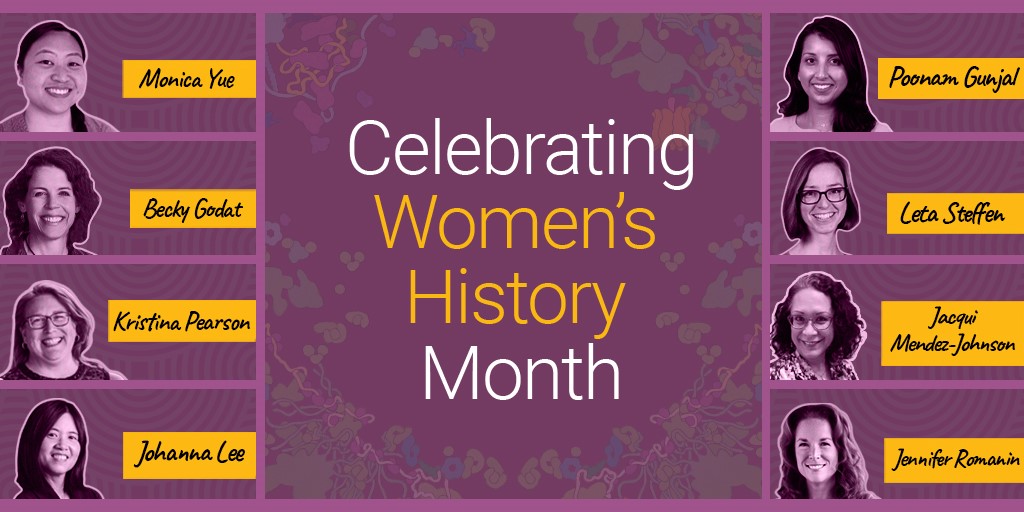
Part of my exploration of this topic included having conversations with a handful of my incredible female colleagues at Promega about the challenges women in STEM face. These colleagues were (in no particular order): Becky Godat, Instrumentation Scientist; Jacqui Mendez-Johnson, Quality Assurance Scientist; Johanna Lee, Content Lead, Marketing Services; Jen Romanin, Sr. Director, IVD Operations and Global Support Services; Kris Pearson, Director, Manufacturing & Custom Operations; Leta Steffen, Supervisor, Scientific Applications; Monica Yue, Technical Services Scientist; and Poonam Gunjal, Manager, Regional Sales.
What is the Confidence Gap?
The confidence gap describes the tendency that women of women to be less self-assured in their abilities than their male counterparts. Findings from a study based on two decades’ worth of research supports the confidence gap, confirming that men have higher self-esteem than women. In the 9 years it took to complete the study, the 8 co-researchers spent 8 of those years collecting and analyzing data from more than 985,000 men and women across 48 countries, and took one additional year to write up their findings. While it wasn’t really a surprise to see that overall men have higher self-esteem, the degree of similarity across the many different cultures, nearly all of which demonstrated men having higher self-esteem, did come somewhat as a surprise to the researchers.
While some studies have hypothesized that having lower levels of self-confidence might be beneficial to women’s competence in the long term, by encouraging us to accept feedback and constantly seek opportunities for improvement and to take initiative. However, if we are truly seeking to level the playing field and address the barriers facing women looking to pursue a career in STEM, then it’s clear that addressing the confidence gap needs to be part of that equation and overall strategy.
The Myth of the Math Brain
One way we see the confidence gap play out in STEM is the old but persisting myth of the male math brain. This myth perpetuates the misconception that boys are naturally better at math, while girls are naturally better at language and verbal skills. However, many studies indicate that there is no substantial difference between boys and girls in biological cognitive ability or aptitude for math or verbal processing.
Despite this lack of evidence supporting an innate genetic difference in ability or aptitude, we still see a significant confidence gap between boys and girls around their math abilities starting as early as elementary school. By grade 2, before any performance differences are evident, many girls already lose confidence in math, while boys the same age are more likely to say they are strong in math.

This gap is attributable to a number of factors, including social and cultural perceptions, implicit and explicit biases, and various forms of anxiety. When it comes to tackling math problems, research shows that girls have lower levels of confidence and higher levels of math anxiety than boys do. Research also shows that early education teachers (the majority of whom are female) often have math anxiety and other gendered stereotypes that they pass on to their female students. For example, teachers can often underestimate girls’ math abilities, assume the girls need to work harder to achieve the same as boys, and some have even been shown to grade girls more harshly for the same work.
Walking a Tightrope
“Alexa, play The Man by Taylor Swift”
By listening to this song, in addition to the joy of experiencing what I would personally call a certified bop, through the lyrics you will also see a prime example of the confidence gap at work: the tightrope bias.
The tightrope bias (also known as the double bind) refers to the thin line women in the workplace—particularly women in leadership roles—find themselves balancing on while navigating society’s expectations for the roles of both “woman” and “leader”. On one hand, they juggle the expectation that women should be “feminine”, in the traditional sense of being gentle, sweet, and sensitive to the needs of others. And on the other hand, society expects leaders to be tough, assertive, and ambitious, all traits traditionally considered “masculine”.
This double bind is best illustrated by the double standards that exist in the way society perceives and labels the exact same traits differently in men and women. For example:
- Men are assertive, but women behaving the same way are labeled as aggressive
- Women are too pushy, while men doing the same thing are ambitious
- Men are passionate, but women are shrill or hysterical
- Women are stubborn, while men are determined
- Men are persistent, but women are nagging
- Women are bossy, while men are simply ‘the boss’
In order to be a successful leader, women need to be confident and be able to speak up and speak out. However, due to negative perceptions stemming from these double standards, many women have learned from experience that good leadership qualities (like confidence) are traits that they can be disliked, criticized, and penalized for. This is a problem for many women for many reasons, but one of those reasons is that being likeable is important to them. When it comes to likeability, research has shown that for men, likeability only carries weight for them in their interactions with women, not in their interactions with other men. But for women, likeability is viewed as asset in all of their interactions.
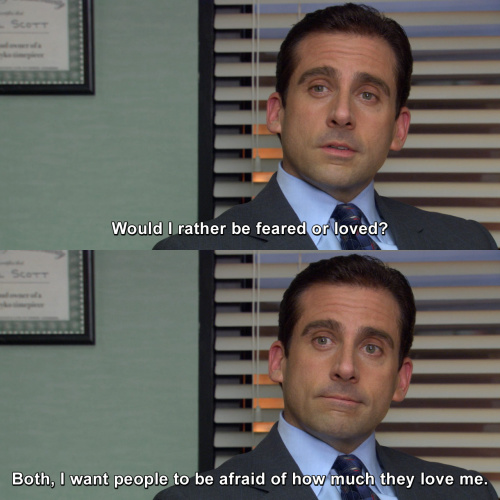
Due (in part) to this desire to be liked by our colleagues, a way that we walk that tightrope is by undercutting ourselves with the language habits we use. In order to avoid coming across too aggressively, women tend to adopt these habits to soften our language in several ways, from inserting words like just (e.g., “I just think…” or “I just wanted to check…”) to prefacing our thoughts with qualifiers (e.g., “Correct me if I’m wrong…”). However, these efforts to avoid appearing too aggressive can actually subtly undermine and devalue our opinions in other ways through the eyes of our male colleagues, by coming across as uncertain, apologetic or even surprised.
Kris and I discussed our experiences with feeling compelled to soften our language at work, particularly when voicing opinions in meetings. Kris told me how she had appreciated when a male colleague of hers at Promega had pulled her aside after a meeting once and pointed out to her that she was undercutting her own expertise and opinions by using qualifiers, as she hadn’t even realized that was something she was doing. This is a great example of how we can start shifting the perception of female leaders in STEM, by cultivating an environment that encourages productive feedback that helps women feel understood, comfortable and like they don’t have to modify their language in order to express their opinions.
Media Portrayals of Women in Society
In both a general and historical sense, every form of media, from magazines to movies, are guilty of perpetuating negative gender stereotypes and societal expectations which contribute to the confidence gap . Magazines push messaging that focuses on shrinking and shaping women to better fit within the box (and body) that society has deemed acceptable for us. They tell women how to dress, how our [hair/skin/insert virtually any body part or feature here] should look, how we can make ourselves thinner, prettier, and overall more appealing to men, which will allow us to fulfill our ultimate and predetermined roles in society as a wife and mother.
This type of media bombards girls from a very young age, emphasizing to us early and often that what we look like is the most important thing about us. That messaging drills into our heads, so loudly and so often, that our societal value depends more on what is placed on our heads instead of what is placed in them. This alone should clearly illustrate why so many girls grow up to be women who lack confidence.
In movies and tv shows, women are often written and portrayed as one-dimensional supporting or side characters, especially in genres that are stereotypically viewed as more masculine, like action and sci-fi. These characters are typically utilized as plot devices, introduced briefly and strategically with the sole purpose of advancing the storyline of the male lead. It’s usually something to the effect of: Due to the struggle and sacrifice of his nameless mother and/or the untimely and tragic death of his wife (who we will only briefly glimpse on-screen), the male lead has now obtained the motivation and inner strength he needs to save the world.
This type of media sends the message that only men can be the main characters and the heroes of the story, and that women are always either a one-dimensional side character or the damsel in distress. Luckily, we are beginning to see this shift so we will hopefully see more women portrayed a little more like Elastigirl/Mrs. Incredible and a little less like the way women have been traditionally written in Sci-Fi films, as actress Caitlin Reilly hilariously mocks in this spoof.
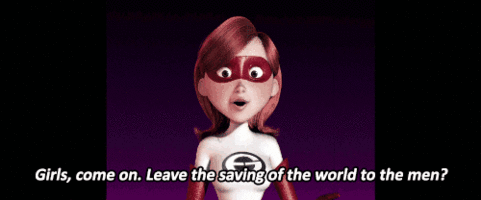
If We Can See Her, It’s Easier to Be Her
In Part 2 of this blog series, we talked about the idea of “seeing is believing”, and how research has shown that women and girls are significantly impacted in our perception and belief of what is possible for ourselves and others when we have role models. A 2018 study found that this is especially true for girls seeing women in STEM portrayed in media. The study evaluated the influence of the character Dr. Dana Scully, the protagonist of the hit series The X-Files, on girls and women entering STEM fields. They found that nearly two-thirds of women working in STEM today viewed Scully as their personal role model and that the character also increased their confidence to pursue and excel in a typically male-dominated profession.
Though this feels like something so obvious it shouldn’t have to be stated, I’m going to state it for posterity anyway: women—just like all human beings—are complex and multifaceted creatures. Like all human beings, we contain multitudes. And just like all human beings, we deserve to see ourselves and all of our aforementioned multitudes represented in the media we consume.
The good news is, thanks to the efforts of movements like SeeHer, it seems like we are inching closer towards a future where we will consistently see more full-spectrum portrayals of women in media. Becky and I discussed how it does feel like a step in the right direction that we are finally starting to see better representation, showing that as women, “We don’t all have to be the perfect shape, we’re not all witty, we can be crabby, and we can still be a good human”.
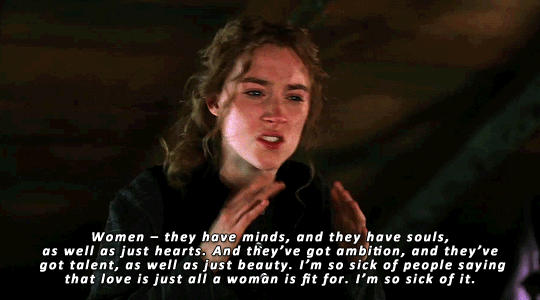
When I was reflecting on what great female character representation look like to me, I immediately thought of the 2019 adaptation of Louisa May Alcott’s Little Women, particularly this specific scene. Considering the YouTube clip has over 1.1 million views alone, I would say I’m far from the only person who has ever felt overcome with emotion watching Jo March (played by the insanely talented Saoirse Ronan) deliver this heartfelt monologue that generations of women can relate to. In a world that consistently devalues and demeans women, Jo so badly wants society to shift its perception to see women as the strong, intelligent, capable people they are. She wants the world to value women for more than just their looks or for what they can offer men, but she is simultaneously grappling with the fact that she doesn’t want to spend her life all alone.
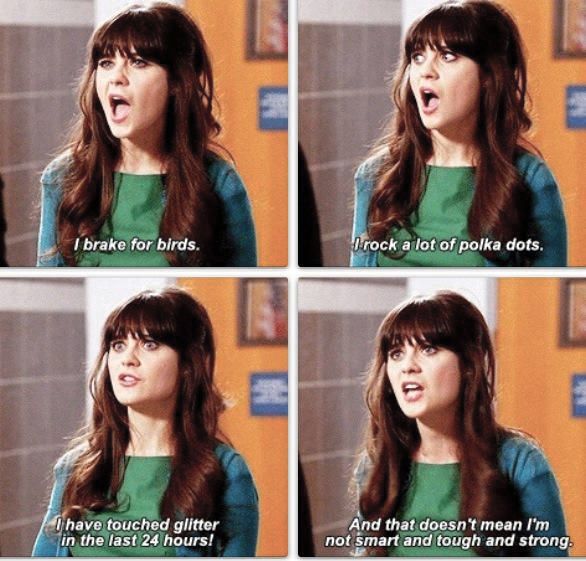
I wanted to use this scene as an example because I think this moment in particular expresses a feeling so many women have felt, but really haven’t seen reflected back at us in media form before: feeling at odds with who we really are and who society expects us to be. In all of the conversations I had with my colleagues, each woman expressed having felt like that in some way, shape or form.
I had also asked everyone about their interests and passions outside of their roles in science. And the range of responses I received (everything from designing and sewing her own clothes to training for triathlons, marathons and ½ Ironman races) really drove home the point for me that being a woman means whatever each of us wants it to mean, and the same is true of being a person in STEM. There is not one right way anyone should have to look or act or be, to fully pursue and participate in science.
In addition to seeing more representation of women in media, giving women this freedom to fully be who they are is another way to give them confidence to pursue their interest in STEM without the fear of being mocked, excluded or not taken seriously.
Empowered Women Empower Women
Last but not least, I want to address one last bias we have seen depicted as a common trope in various forms of media for decades: the Tug-of-War bias. This type of bias describes women, most often in senior leadership roles, who experienced severe gender discrimination at work to get to where they are distance themselves from their female colleagues and ensure that younger women experience the same hell they had to endure.
Sticking with the game metaphors, it feels a little like playing musical chairs. You see there’s a limited number of seats at the table to begin with, and as the game progresses and you see those seats disappearing, you become a little more desperate, a little more competitive, a little more cutthroat in your pursuit of one of those seats. You get to a point where you don’t care who you have trip in order for you to claim the last seat.
Becky had described this exact feeling to me in our conversation, when she said, “You feel like you’re competing with other women for positions and roles when you’re younger, not realizing that there’s enough for all of us. That we can cheer each other on and push each other ahead and high-five and we can all move forward. I think we don’t realize that there’s more resources when we’re younger and ambitious.” And I think that’s the part that many girls learn the hard way growing up: we really don’t have to compete against each other and it’s much more to our collective benefit to support and help one another instead.
So let’s change the game to Red Rover. Instead of taking away chairs and pitting women against each other, let’s change the game so the goal should be to bring in as many women as we possibly can. We want to be adding people, pulling people up with us, making space for them, because there really is space for all of us.
So How Do We Address The Confidence Gap?
Here are a few small ways we can start to tackle the confidence gap:
- Give women and girls the skills and confidence to succeed in math and science. Raise awareness that and give girls equitable encouragement and educational opportunities.
- Promote a growth mindset with yourself and your children. Remind yourself and teach your children that math skills can be learned and changed over time, nobody is innately better suited to be good at math, you can improve just by practicing and working hard. Approaching math (and other schoolwork) with a growth mindset can help empower girls to embrace challenges and encourage them to stick with STEM even when the going gets tough.
- Seek out media that positively represents women characters in STEM. This list is a good place to start.
- Work on building confidence.
- Interrupt bias. Look at the media you consume through a more objective lens. And have candid conversations that pass those observations to your children, friends and family.
- Look for ways that you can make space for others. Work on pulling each other up.
Acknowledgements
This writer would like to extend her deepest gratitude and appreciation to her colleagues—Becky, Jacqui, Jen, Johanna, Kris, Leta, Monica and Poonam. Thank you for so generously and graciously sharing your time and yourselves and for inspiring me to bring this project to life. I feel incredibly lucky to be surrounded by so many strong and supportive role models.
References:
- American Association of University Women. The Myth of the Male Math Brain. Accessed March 2022.
- American Association of University Women. The STEM Gap: Women and Girls in Science, Technology, Engineering and Mathematics. Accessed February 2022.
- American Psychological Association. (2014) Think again: Men and women share cognitive skills. Accessed March 2022.
- Arabia, J. (2021) Women in STEM Statistics to Inspire Future Leaders. Accessed February 2022.
- Bleidorn, W. et al. (2016) Age and gender differences in self-esteem – A cross-cultural window. J. Pers. Soc. Psychol.
- Geena Davis Institute on Gender in Media. (Representations of Women STEM Characters in Media. Accessed March 2022.
- Grant, A. (2021) Who won’t shut up in meetings? Men say it’s women. It’s not. The Washington Post. Accessed February 2022.
- González-Pérez, S., Mateos de Cabo, R. and Sáinz, M. (2020) Girls in STEM: Is It a Female Role Model Thing? Front. Psychol.
- Hammond, A. and Rubiano-Matulevich, E. (2020) Myths and Misperceptions: Reframing the narrative around women and girls in STEM. Accessed February 2022.
- Kay, K. and Shipman, C. (2014) The Confidence Gap. The Atlantic. Accessed March 2022.
- Merzaban, Jasmeen (2021) Women in STEM face a “confidence gap.” Here’s what that means, and how to fix it. Salon. Accessed March 2022.
- Seabright, P. (2020) The ‘likeability paradox’ – why is it so difficult for female leaders to be both liked and respected? Association of MBAs. Accessed March 2022.
- STEM Women. (2021) The Language Women Use in the Workplace and What It Means. Accessed February 2022.
- Warrell, M. (2020) Seeing Is Believing: Female Role Models Inspire Girls to Think Bigger. Forbes. Accessed March 2022.
- Williams, J.C. (2015) The 5 Biases Pushing Women Out of STEM. Harvard Business Review. Accessed February 2022.
- Williams, J.C., Phillips, K.W. and Hall, E.V. (2014) Double Jeopardy? Gender Bias Against Women of Color in Science. Accessed February 2022.
- Zenger, J. (2018) The Confidence Gap In Men and Women: Why It Matters And How to Overcome It. Forbes. Accessed March 2022.

One thoughtful comment